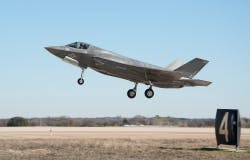DUBLIN, 2 Aug. 2012. Concerns about costs are mounting, yet incumbent governments remain committed to the F-35 Joint Strike Fighter program and development of this fifth-generation jet fighter remains integral to many countries' defense strategy, according to Research and Markets’ latest report, "Lockheed Martin Corporation: The implications of the F-35 Lightning II project.”
Despite technical problems, the F-35 achieved several milestones in 2011 and is surpassing expectations in several key criteria, reveals the report. MarketLine case studies describe topics, such as innovative products, business models, and significant company acquisitions; explain the rationale of commercial decisions; and illustrate wider market and economic trends.
Lockheed Martin is one of the largest global defense contractors, and the Joint Strike Fighter represents a significant investment for the company and several countries' defense strategies.
The project offers many advantages to its participants, with the highly advanced fighter jet offering unrivalled capabilities, says a representative. It was initially considered to be a relatively cost-effective measure for replacing aging fourth-generation aircraft, and the design of the model promised a high degree of interoperability and logistical benefits.
The project is facing numerous challenges, as customers postpone or trim their orders in the advent of the global slowdown and debt crisis. The costs of the program have come under scrutiny, while technical problems have plagued the project, adds the representative.



